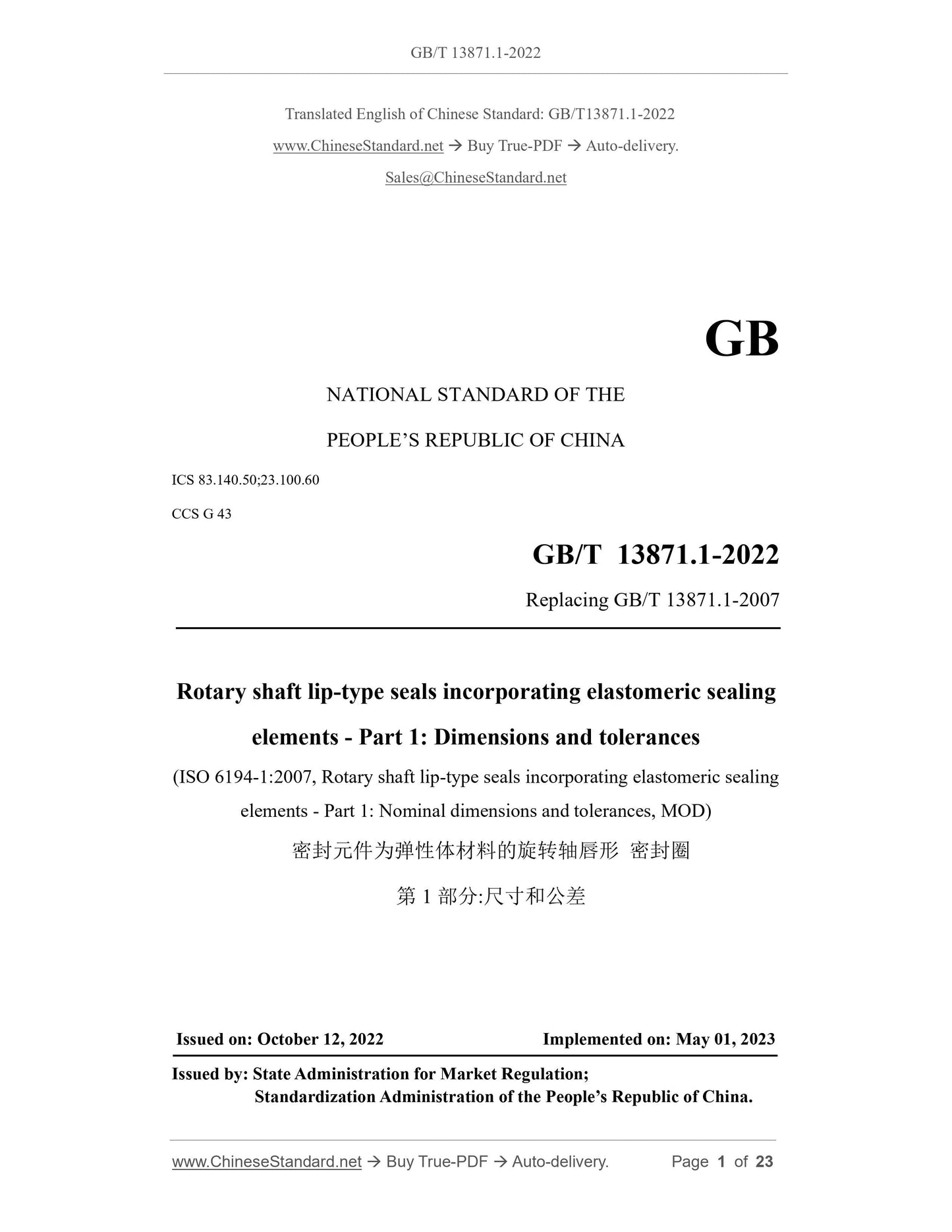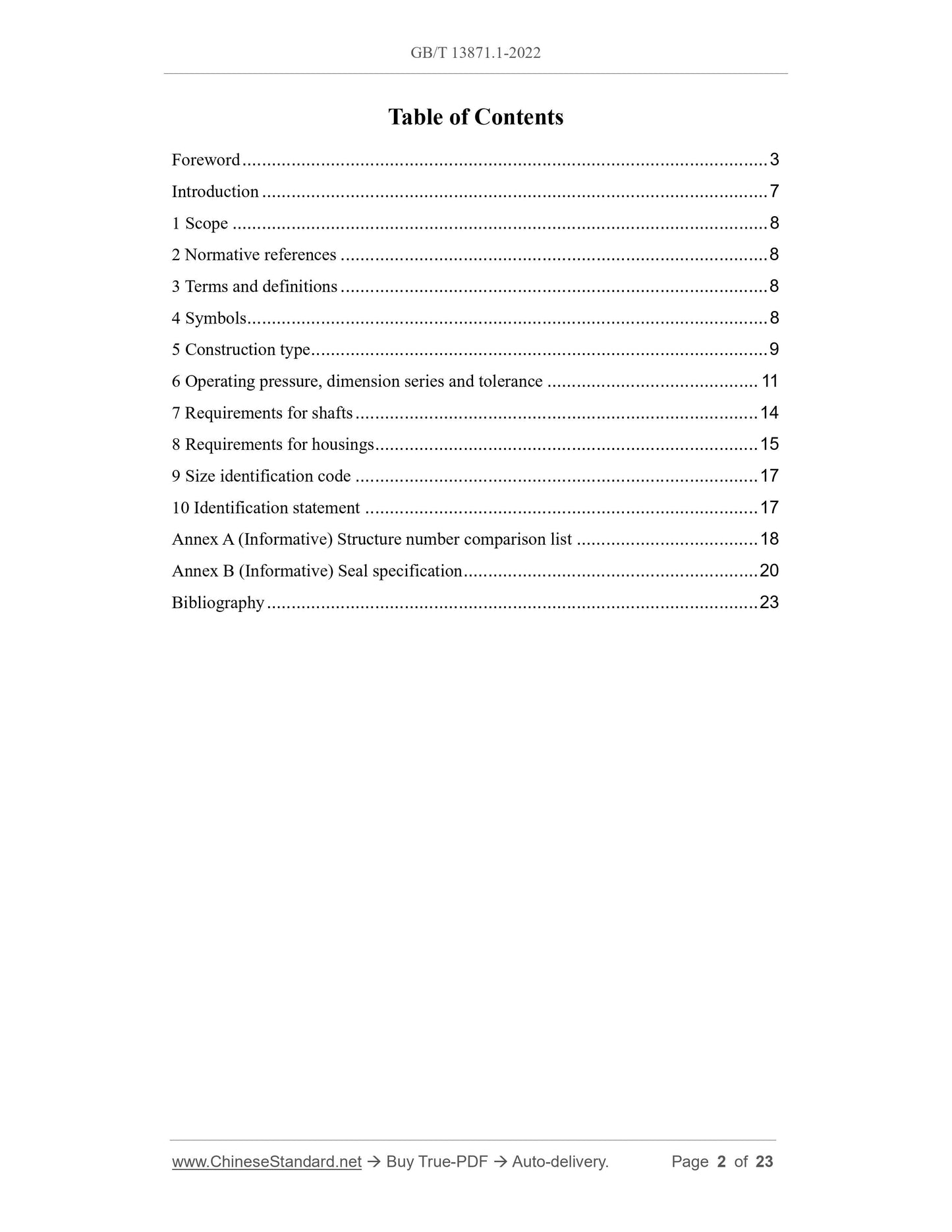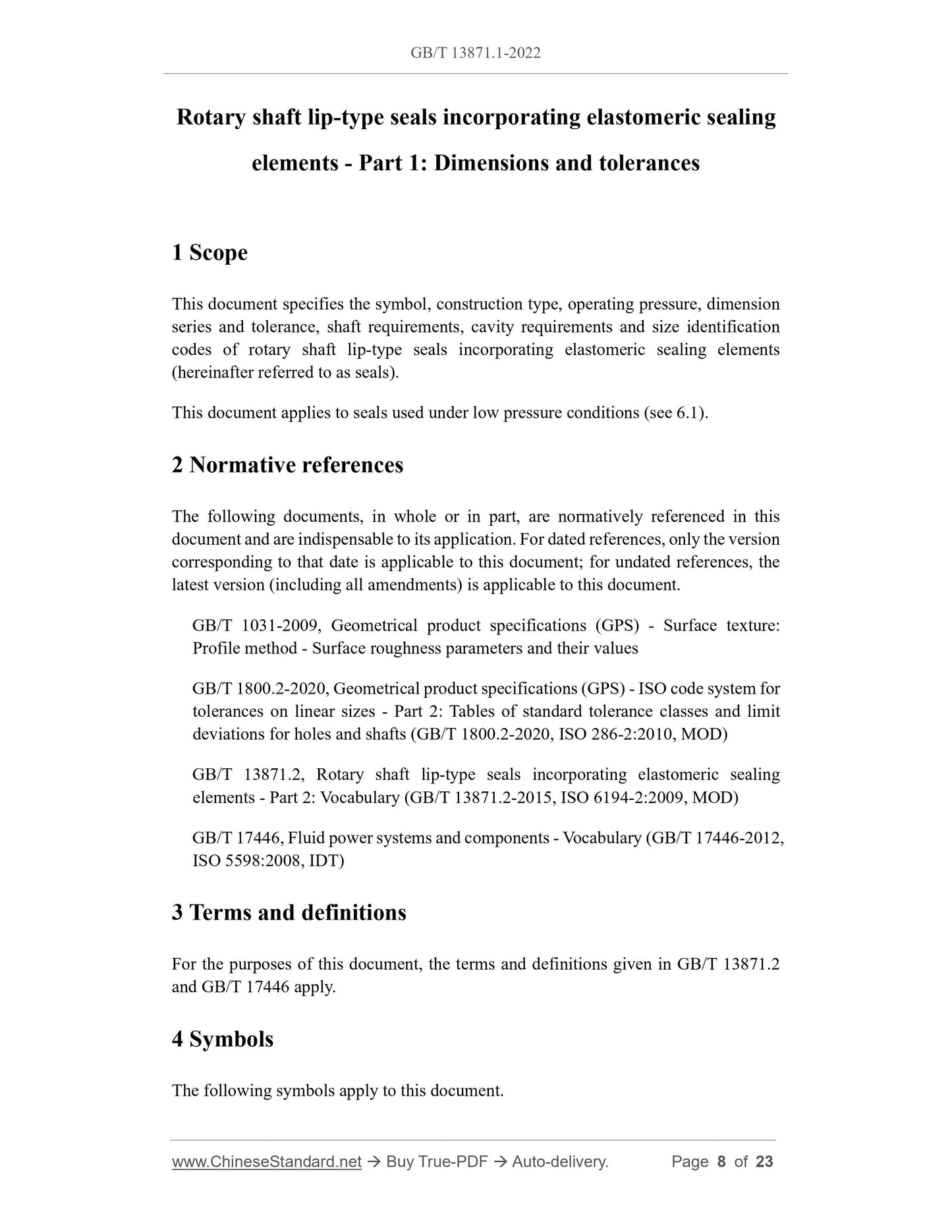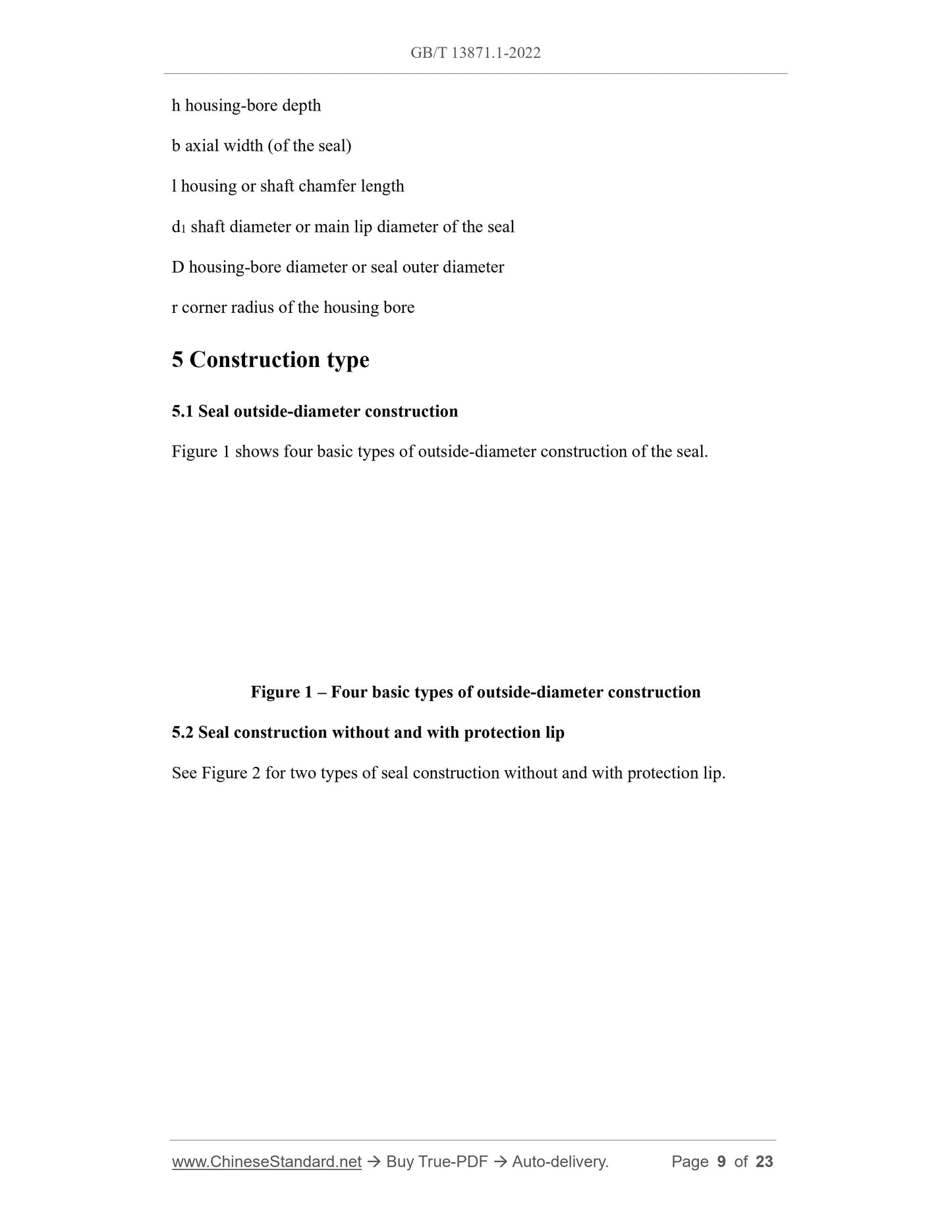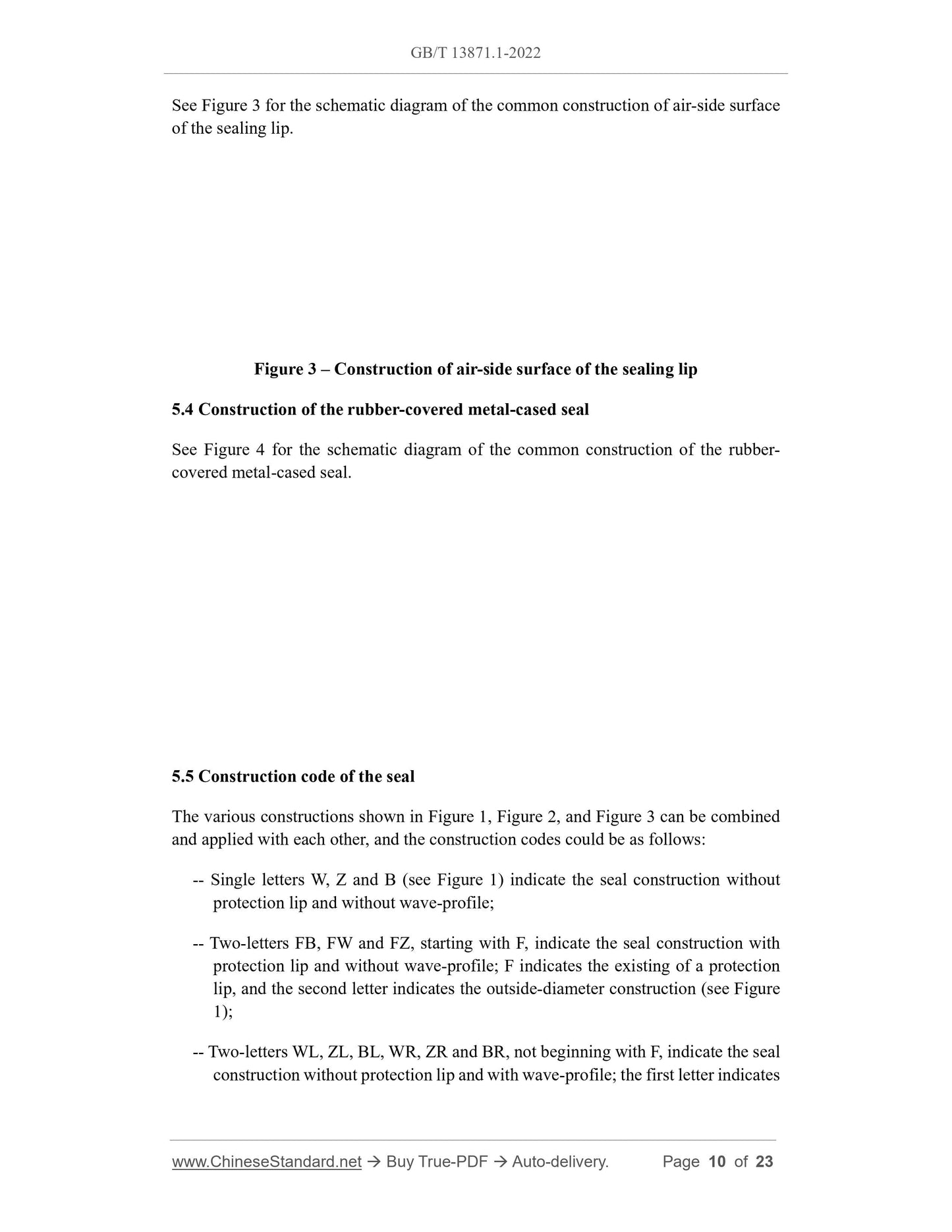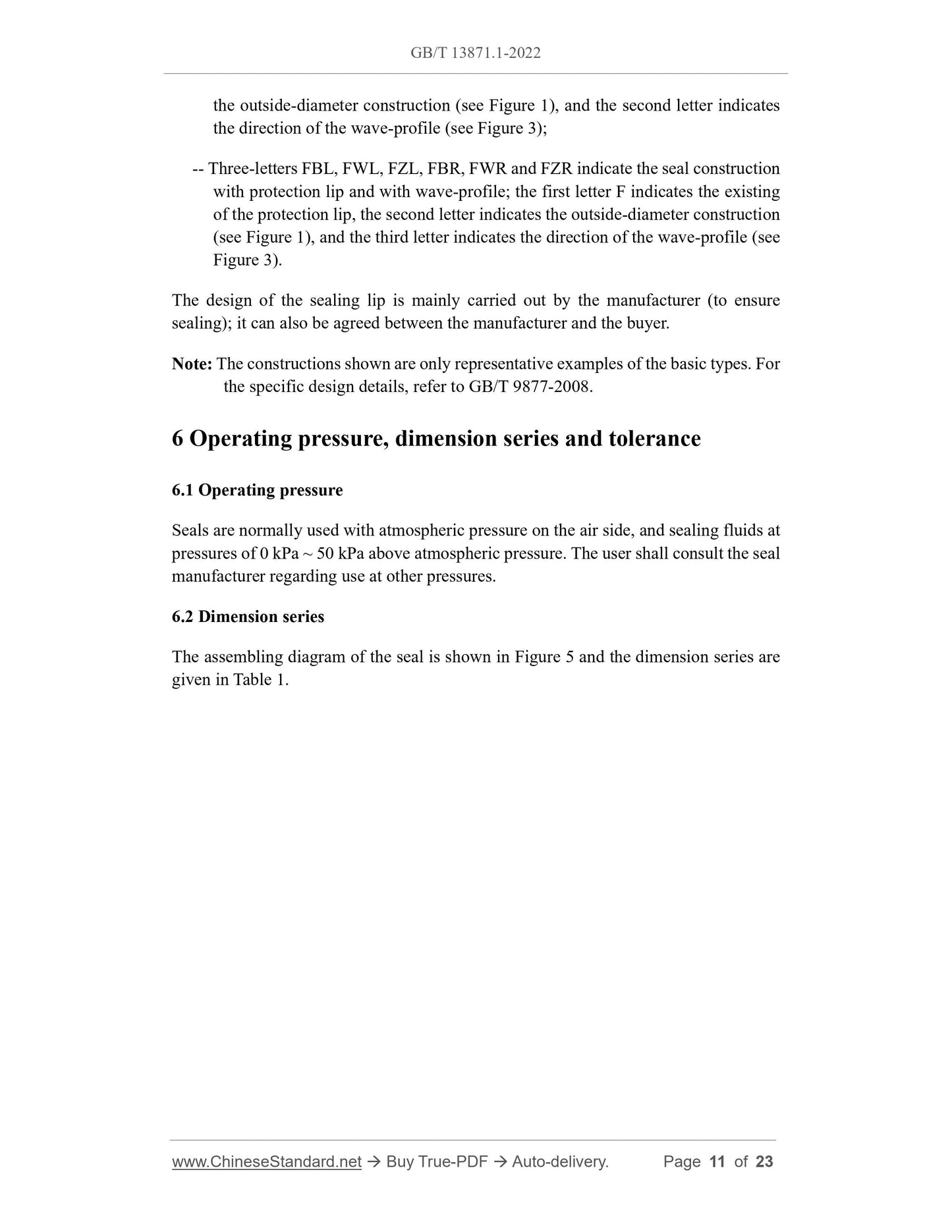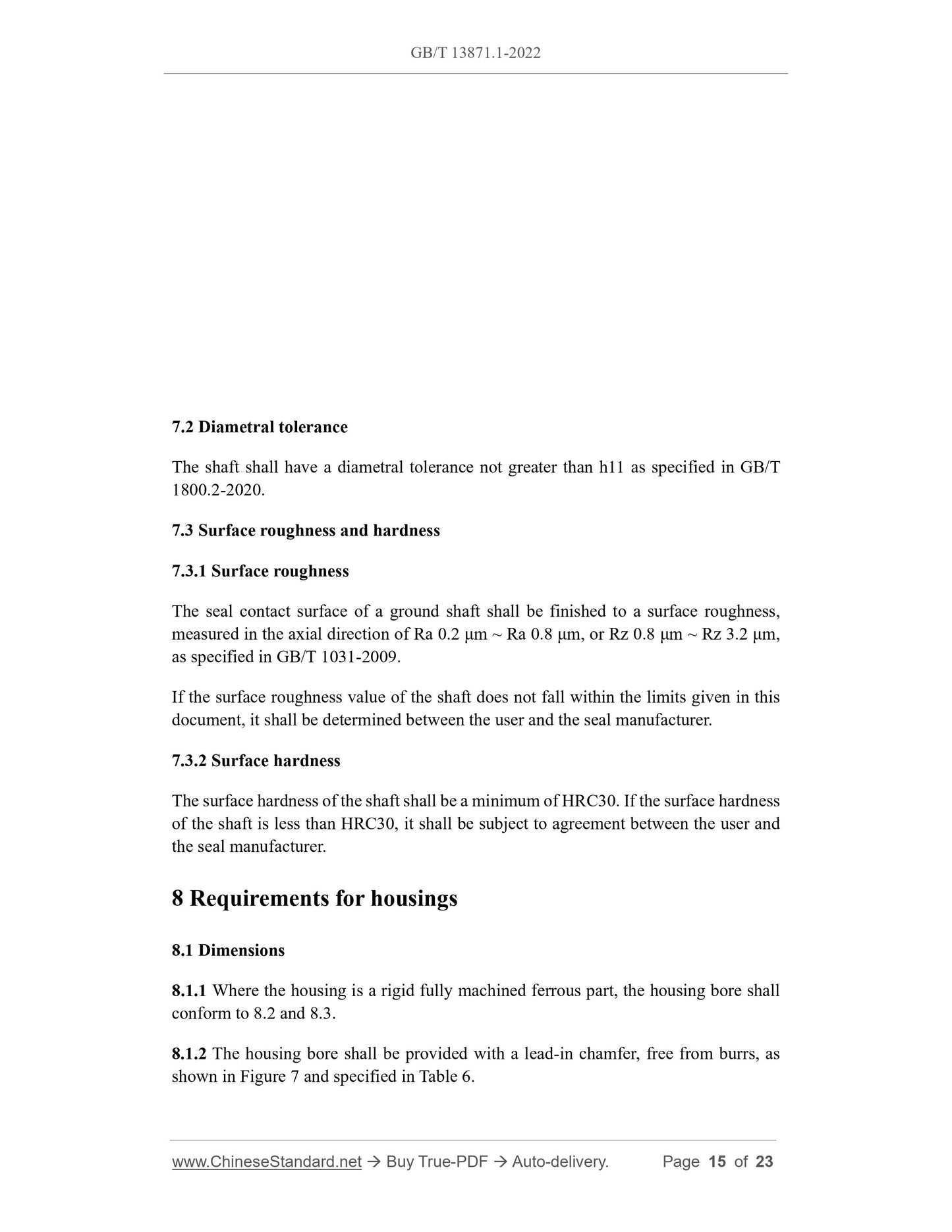1
/
of
7
www.ChineseStandard.us -- Field Test Asia Pte. Ltd.
GB/T 13871.1-2022 English PDF (GB/T13871.1-2022)
GB/T 13871.1-2022 English PDF (GB/T13871.1-2022)
Regular price
$320.00
Regular price
Sale price
$320.00
Unit price
/
per
Shipping calculated at checkout.
Couldn't load pickup availability
GB/T 13871.1-2022: Rotary shaft lip-type seals incorporating elastomeric sealing elements - Part 1: Dimensions and tolerances
Delivery: 9 seconds. Download (and Email) true-PDF + Invoice.Get Quotation: Click GB/T 13871.1-2022 (Self-service in 1-minute)
Newer / historical versions: GB/T 13871.1-2022
Preview True-PDF
Scope
This document specifies the symbol, construction type, operating pressure, dimensionseries and tolerance, shaft requirements, cavity requirements and size identification
codes of rotary shaft lip-type seals incorporating elastomeric sealing elements
(hereinafter referred to as seals).
This document applies to seals used under low pressure conditions (see 6.1).
Basic Data
| Standard ID | GB/T 13871.1-2022 (GB/T13871.1-2022) |
| Description (Translated English) | Rotary shaft lip-type seals incorporating elastomeric sealing elements - Part 1: Dimensions and tolerances |
| Sector / Industry | National Standard (Recommended) |
| Classification of Chinese Standard | G43 |
| Classification of International Standard | 83.140.50; 23.100.60 |
| Word Count Estimation | 20,233 |
| Date of Issue | 2022-10-12 |
| Date of Implementation | 2023-05-01 |
| Older Standard (superseded by this standard) | GB/T 13871.1-2007 |
| Issuing agency(ies) | State Administration for Market Regulation, China National Standardization Administration |
Share
